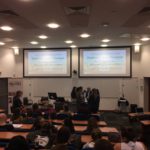
The Democratic Republic of the Congo lies in the heart of Africa. It is the second largest and fourth most populous country on the African continent and is endowed with exceptional natural resources including cobalt and copper. But, given that in 2022 62% of Congolese people were surviving on less than $2.15 a day, it is clear that the country’s natural resource wealth has not trickled down to the people.
King Leopold II of Belgium is a good place to begin. On 5th February 1885, the Belgian King established the Congo Free State by seizing the African territory as his own possession. This occurred during the 1884-1885 Berlin Conference when Leopold was the only European to be granted private ownership of an African territory. This contrasted greatly with the traditional colonial rule practised by other European countries at the time. Leopold’s stated goal was to bring civilization to the enormous African landmass. However, the Congo Free State would soon become a place of notorious cruel treatment of Congolese people. Forced labour was common to harvest rubber, palm oil and ivory. If their quotas were not met, punishments included beatings, lashings and hand amputations. Sexual violence, famine and disease were also not uncommon which led to a significant population decrease.
As news of the events in the Congo broke to the international community the Congo Reform Association was formed, headed by journalists such as George Washington Williams and Edmund Dene Morel. Under these pressures, the Belgian government took control of the Congo Free State away from Leopold in 1908 and it was renamed The Belgian Congo. Leopold died a year later. But, to a great extent, the Belgian government continued Leopold’s racist practices. Revolution began to brew in the 1950s and a round table conference on the 20th of January 1960 saw the Congolese persuade the Belgian government to grant them independence.
However, just days after independence, the Congo Crisis erupted, and civil war broke out. An estimated 100,000 lives were taken, including the state’s first Prime Minister, Patrice Lumumba, and UN Secretary Dag Hammarskjöld, who died in a plane crash as he attempted to mediate the crisis. The war grew from rebellions by the army who demanded increased pay and the removal of white officers. Much of the army aligned with leader Lumumba’s nationalist leanings. This conflict was also a proxy conflict between the United States and the Soviet Union during the Cold War as the US feared the state would resort to communism.
Several coup d’états were witnessed, but Mobutu’s 1965 rise to power was particularly notable. He renamed the country ‘Zaire’ in 1971 until 1997 when he was overthrown after a rise of civil conflict. The country was then renamed the Democratic Republic of the Congo (DRC) as we know it today. So, where does the DRC sit in the 21st Century?
The country became a multi-party state where Kabila was the 1st President. Following his assassination in 2001, his son Joseph assumed power but was not officially elected until 2006. He then won a second term in 2011 but was widely unpopular, primarily due to his disregard for the most impoverished groups. Joseph attempted to stay in power by conducting a consensus which would delay the election. However, protests and government intervention stopped his master plan, and ultimately Joseph stepped down. Tshisekedi was then elected and remains in power today.
Armed conflicts continue in the DRC, especially by a rise by the Rwanda-backed M23, driving the number of displaced people in the country to 7 million. Despite Tshisekedi’s promise for reform to break the cycle of violence, corruption and human rights abuses, these cruelties continue to plague the country. Journalists, activists, government critics and peaceful protesters all suffer great repression by the government.
The DRC’s past and present have led to a situation whereby in 2024, over 25 million people, a quarter of the population, require humanitarian assistance, especially in the east. Diseases such as cholera and measles are wreaking havoc and climate shocks such as flooding affecting over 2 million people. Over 1 million children are acutely malnourished and in a vastly complicated and suffering country, the government unfortunately doesn’t have the capacity or potential desire to alleviate the situation. Decades of oppression and civil war has led to one of the most complicated humanitarian crises in the world, at its core fuelled by DRC’s great number of ethnic groupings, and the differences between them.
Image: Darwinek, ‘Flag-Map of the Democratic Republic of the Congo‘, 2015 // CC BY-SA 3.0



Average Rating